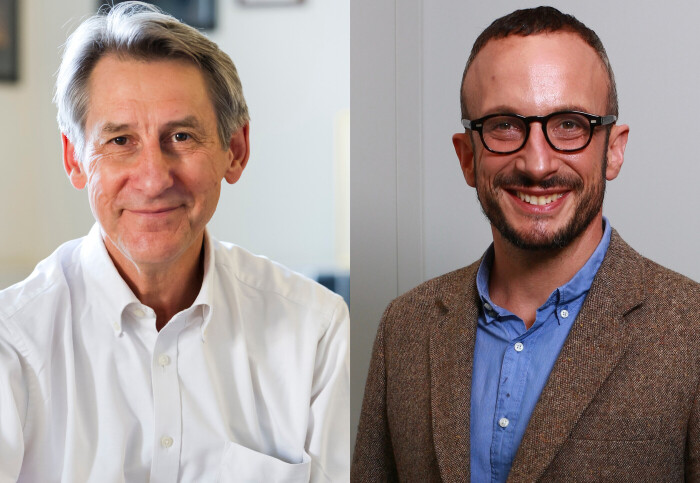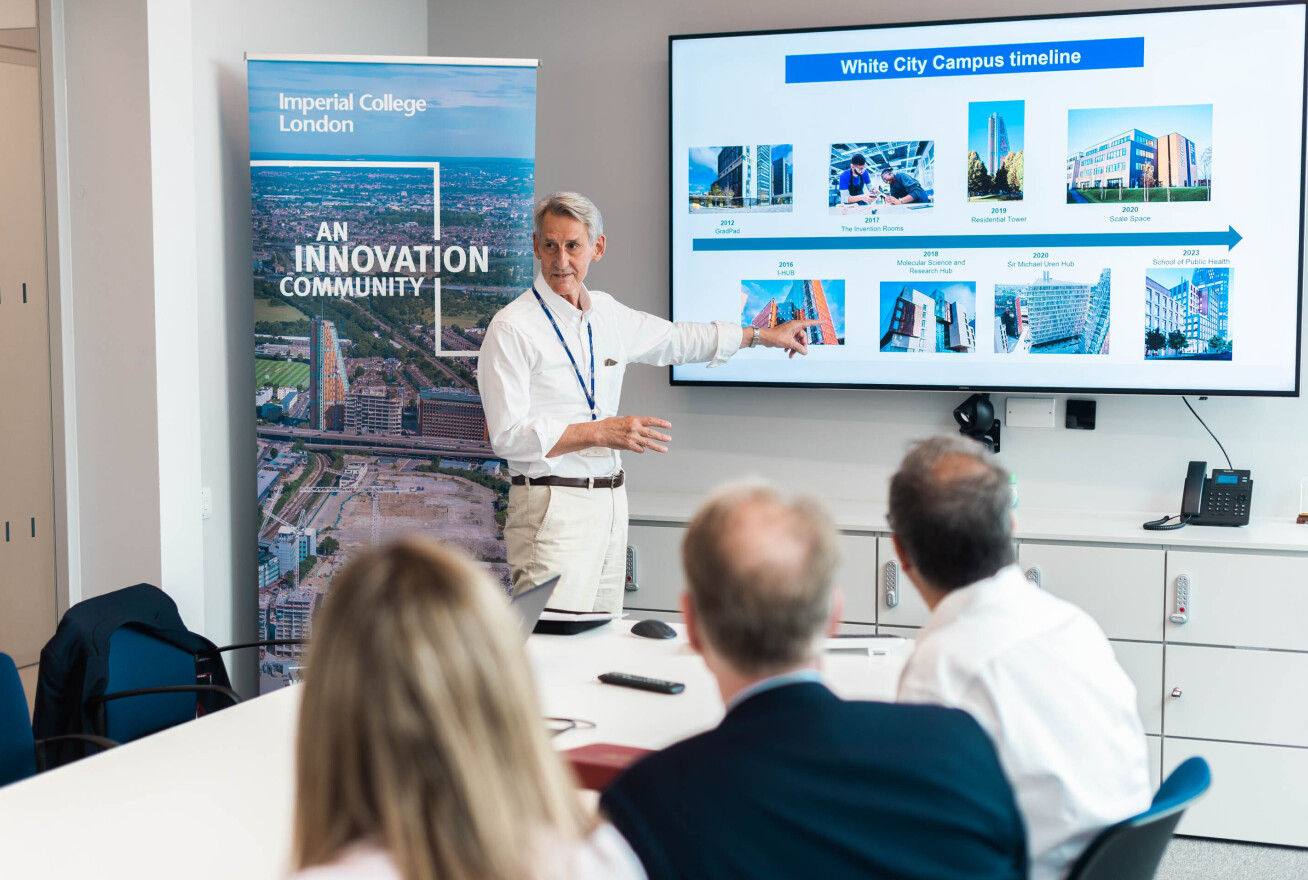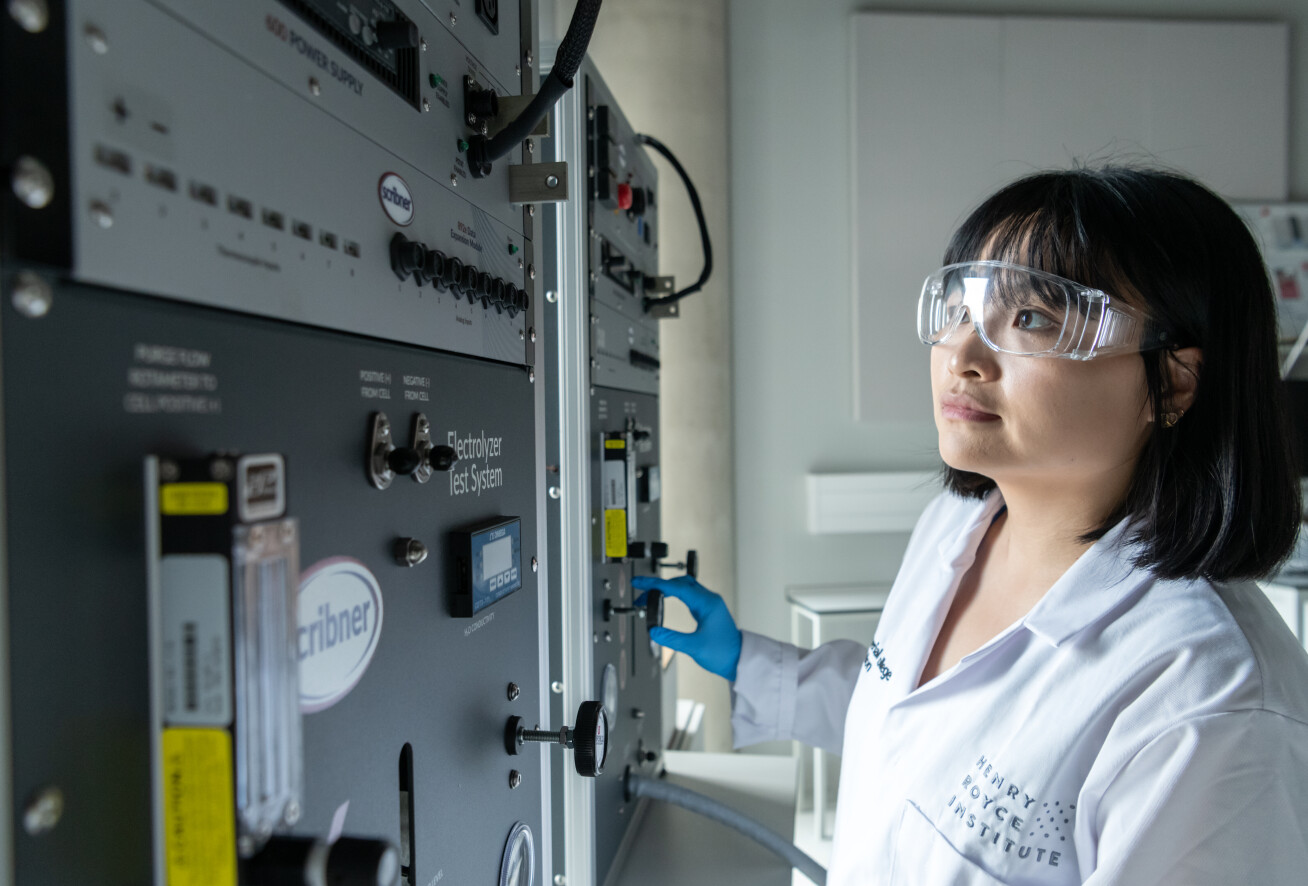

Professor Ifan Stephens has been announced as the new Research Area Lead for Royce at Imperial, succeeding Professor Neil Alford.
Professor Alford's leadership has been instrumental in developing the 'Atoms to Devices' research theme at Royce Imperial and Imperial College London, fostering partnerships with universities such as Leeds, Manchester, and Cambridge as part of the Henry Royce Institute network. Professor Stephens will now lead Royce Imperial as the hub continues to expand its research capabilities and collaborations.
Professors Neil Alford and Ifan Stephens recently met to discuss the evolution of Royce at Imperial and the vision for the future. Professor Alford reflected on key milestones and collaborations that have shaped Royce at Imperial, while Professor Stephens outlined the exciting opportunities ahead.
The foundations of Royce at Imperial
Professor Stephens: What were the foundations and key milestones of Royce at Imperial?
Professor Alford: The Henry Royce Institute was set up to push materials science research forward through national collaboration. Back in 2015, we started talks about Imperial College London joining The Henry Royce Institute and we took the initiative to develop a collaboration with the Universities of Manchester, Cambridge and Leeds in the functional materials theme, in what we now call 'Atoms to Devices', a name devised by Professor Mary Ryan - thanks Mary!
So now, our facilities are open to users from companies, start-ups, and academia to bring their 'Atoms to Devices' ideas to life! Professor Neil Alford
In the past decade, we’ve had a lot of conversations, moved into the 8th floor of the new Sir Michael Uren Building, and turned Royce at Imperial into a new hub for materials innovation and access to cutting-edge facilities.
None of this would have happened without the support from the Henry Royce Institute and our team at Royce Imperial. Dr Peter Petrov was fantastic in organising the labs, especially the design of the labs and the location of the key equipment and in particular the process cooling water. Our previous and current Research Development Managers, Dr Amy Nommentos-Nomm and Dr Michael Leverentz have also been key to helping us grow rapidly, alongside our new facilities team. We owe a huge thanks to the Imperial Estates team (Bruna Santandrea) and Building Services were brilliant in getting us up and running.
So now, our facilities are open to users from companies, start-ups, and academia to bring their 'Atoms to Devices' ideas to life!
Professor Stephens: What have been your highlights during your time as Royce Research Area Lead for Royce Imperial?

Professor Alford: I’d say working with the Estates team to complete the setting up of the facility. They did a fantastic job, and we had regular weekly meetings. It was a tricky project, no doubt about it. Getting everything right was a challenge. So, the real highlight was finishing the floor and getting all the equipment in place!
Also, once the facility was complete, I enjoyed showing visitors and companies around the facility, demonstrating how it has become a hub right at the cutting edge of where materials science and engineering should be.
Expanding research and collaboration
Professor Alford: What were your first impressions of Royce Imperial, Ifan?
Professor Stephens: When I arrived in 2017, there was a lot of excitement about the new White City campus, where Neil was also leading the development and master planning. There was a lot of talk about the opportunities, but also some scepticism about how they would materialise. Personally, I was excited about all the new equipment there!
The whole Royce at Imperial team has worked incredibly hard to get the facility off the ground, and Neil has certainly left enormous shoes to fill. Professor Stephens
When we were able to move our facilities to MSRH at White City in 2020, it became clear just how much potential Royce at Imperial and White City could have for our research. We were excited to be closely linked to Royce, even though it was still being set up at the time!
Since then, it’s grown, and it’s been great to see the impact. My team and users are really happy with the facilities at Royce Imperial, and it’s not just us! People from all around the university, as well as external users from other universities and companies (including many local SMEs in the White City campus), have given us great feedback.
Aside from the actual physical lab, I think the coordination with our Royce partners, the Universities of Cambridge, Leeds, and Manchester to develop the 'Atoms to Devices' theme has been a really important part of the process and will continue to be.
The whole Royce at Imperial team has worked incredibly hard to get the facility off the ground, and Neil has certainly left enormous shoes to fill.
Future opportunities
Professor Alford: What do you think about the future of research and collaboration at Royce, Ifan?
Professor Stephens: The field is changing rapidly, especially with the prospects of developing materials for quantum computing. We believe this will become extremely important for computing in the near future, and this is where our 'Atoms to Devices' theme will play a crucial role.

Another big focus is reviving the UK semiconductor industry. It’s crucial for Atoms to Devices to identify opportunities here, engage the community, and explore how the Royce Institute can contribute through access to our facilities and opportunities for collaboration.
It's also vital for Royce to act as a convener, reaching out to governments and influencing policy. The Henry Royce Institute recently published a National Materials Strategy, directly outlining to the government the importance of materials for the UK’s future.
Professor Alford: Yes, I agree! When we first started the 'Atoms to Devices' theme, we thought it would be a good idea to create R&D roadmaps. Those roadmaps ended up being extremely helpful and eventually formed the basis for the materials strategy developed by the Henry Royce Institute.
In recent years we've seen an increase of users, particularly SME's. If I were to advise younger academics, companies or start-ups working in this space, I’d recommend visiting Royce at Imperial and seeing what it has to offer. You can access cutting-edge equipment that’s well-maintained, and our team can support you with getting set up and trained on our facilities. It makes a huge difference.
It is great to see early career academics, using this equipment. Thanks to our access scheme and new framework agreements with many Universities, it has become very easy for external colleagues to use our facilities. Professor Stephens
Professor Stephens: It is great to see early career academics, using this equipment. Thanks to our access scheme and new framework agreements with many Universities, it has become very easy for external colleagues to use our facilities. We’re also seeing a lot of local SMEs from around White City taking advantage of the facilities.
Professor Alford: What's next?
Professor Stephens: We’re looking forward to branching out and connecting with other themes. Many companies that are using our equipment are operating in the biomaterials space, so we’re exploring where 'Atoms to Devices' can intersect with this research.
We also want to make sure we’re getting the most synergy with other Royce themes, and linking up with new research leads across the country. We hope this will help consolidate and expand the 'Atoms to Devices' theme, while also opening up new opportunities.
Learn more about Royce at Imperial.
Article text (excluding photos or graphics) © Imperial College London.
Photos and graphics subject to third party copyright used with permission or © Imperial College London.
Reporter

Kayleigh Brewer
Department of Materials








